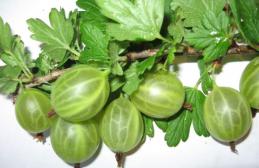Opinions differ on the question of when to give cabbage ☘️ to a child and what its benefits are. The reason for this is the possibility of provoking bloating in the baby’s intestines. Therefore, other types of cabbage are added to the diet first, and then white cabbage. Parents often refuse such vegetable “supplements”, underestimating its role in the nutrition of their children. Let's look at the main points of using cabbage in baby food.
Vitamins and nutrients
White cabbage ☘️ contains many useful components. Not a single vegetable can compare with it in this regard. In terms of protein content, it is in the lead and is located next to carrots and beets. This vegetable is valued for its acids, which cannot be replaced. These acids ✨accelerate cell growth, normalize adrenal function, without them the process of hematopoiesis is impossible.
⭐️ The white cabbage beauty is valuable due to its high content of vitamins and minerals, as well as:
- the ability of vitamin C to retain its properties in cabbage for a long time;
- the presence of vitamin K, which normalizes lipid metabolism, heals wounds, strengthens bones and teeth;
- a large amount of bioflavonoids;
- vitamins of group P, B;.
- rare vitamin U, which helps heal stomach and duodenal ulcers, as well as an effective assistant in the fight against gastritis;
- niacin, the main function of which is to reduce cholesterol and normalize lipoprotein;
- carotene;
- vitamin D.
Benefit
⭐️ Main beneficial properties:
- regulates intestinal function, eliminating constipation;
- increases the secretion of gastric juice, increases appetite;
- with the help of fiber it eliminates toxins and restores microflora;
- activates metabolism;
- strengthens blood vessels.
- reduces swelling;
- activates blood flow;
- prevents the formation of fats and lowers cholesterol levels.
Cabbage has an analgesic effect and the ability to treat cholelithiasis.
Introducing cabbage into a child's diet
Doctors recommend starting to include cabbage in the children's menu after the child has mastered ✨ cauliflower and Brussels sprouts. When asked at what age it can be given to a child, baby nutrition experts answer unequivocally: not earlier than five months for an “artificial baby” and six months for an infant, and it is better to give it from the age of one year.
⭐️ But you should remember these points:
- young children should not be given fried cabbage;
- if your baby has a tummy ache, remove cabbage from the menu;
- If you suspect an allergy from cabbage, you should consult a pediatrician or allergist.
If a child has diarrhea as a “frequent guest”, cabbage is not yet included in the diet. A child aged two to three years, who can eat sour foods, is also given sauerkraut, but in small quantities.
Contraindications
There are more benefits from cabbage ☘️, but you also need to know what harm it can cause. It is harmful to give your baby a lot of cabbage. An excess of it leads to bloating, nausea, and flatulence.
⭐️ Contraindications are:
- the baby has a stomach or intestinal ulcer;
- bleeding in the gastrointestinal tract;
- increased peristalsis;
- enterocolitis.
Basic cooking rules
Children unfamiliar with the vegetable can be introduced only after the previous product has been completely mastered. The cabbage variety is hypoallergenic and rarely causes an allergic reaction. But caution must be exercised.
For the first couple of months, the baby is given cabbage puree ☘️ with the addition of milk, salt, etc. And when the stomach adapts to the new vegetable, you can try combining it with products already introduced into the baby’s diet, for example, mashed potatoes.
It is better not to give raw vegetables to small children, and fried vegetables should not be given at all. The vegetable is well absorbed in borscht, mashed potatoes or casseroles.
What you can cook - let's diversify the menu
✨ In children's diets from the age of two, you can introduce cabbage leaf dishes such as casserole, soup, stew with the addition of zucchini, potatoes.
❤️ Recipe No. 1. To prepare, boil the chicken breast lightly and drain the broth. refill with water. A secondary broth is obtained in which the meat is cooked until cooked. Add homemade beef sausages for children (this is optional). Sausages and meat are crumbled after cooling. Next, chop pickled cucumbers (half a kilo), a couple of carrots, a medium onion, and tomato paste. Add greens, bay leaves and garlic.
The shredded vegetables and other ingredients are sent into the broth and boiled until the vegetables are cooked, take out the shredded cabbage and send it there to cook. When it's cooked. Combine the ingredients, add a spoonful of tomato paste, and boil again.
❤️ Recipe No. 2. Take 300 grams of meat for the soup (you can use chicken breast). Add tomato paste, medium carrots, 4 cloves of garlic, a kilo of white cabbage, about four ripe tomatoes and an onion.
Shred the cabbage and cook in a large saucepan so that it is easy to stir. The carrots are peeled and grated coarsely. But the onions are cut smaller. The meat is also chopped, a frying pan is placed on the stove, and vegetables and meat, except cabbage, are placed on it. After the vegetables are cooked, they are added to the boiled cabbage, after adding water. Bring the contents of the saucepan to a boil, adding tomato paste to taste and seasoning with herbs. The dish is ready.
Broccoli, Brussels sprouts and cauliflower are included in children's menus in the first year of life, but most mothers are afraid of white cabbage. Is it possible to introduce this vegetable into complementary feeding for infants, how is it useful and how to properly prepare it for a child?

Benefit

You can learn even more about the benefits from the program “Live Healthy.”
Minuses
- Due to the content of coarse fiber, it can irritate the gastrointestinal mucosa.
- Consumption in large quantities leads to abdominal pain, flatulence and problems with stool.
- Although rare, allergies can occur.
- Sauerkraut contains vinegar, which can harm children's digestive tract.
- Due to the increased content of histamine in sauerkraut, its use can lead to a pseudo-allergic reaction (signs of allergy appear).

At what age can it be given?
- White cabbage can be given to a child under one year old, but only after introducing him to other vegetables - zucchini, cauliflower, carrots, pumpkin, potatoes, broccoli and others. It is recommended to add white cabbage to vegetable dishes for a child no earlier than 7-8 months of age.
- In fresh form, it can be included in the menu of a child from 3 years old, provided that the baby does not have diseases of the digestive tract, for example, gastritis or pancreatitis. In addition, the child must chew the food well enough to consume it.
- The stalk is considered a harmful food, since various harmful compounds accumulate in it during the ripening of the vegetable. For this reason, children should not be given the stalk.
- In fermented form, it is acceptable in the diet of children over 3 years old, but in small quantities.

Calculate your complementary feeding table
Introduction to the diet
To introduce your child to white cabbage without harming his health, you should add a little of this vegetable to a multi-component puree and observe your little one’s reaction to this food. If the child tolerated this product well, next time the amount in the puree can be increased slightly. If any symptoms of intolerance occur, the introduction of complementary foods should be postponed.

Cooking methods
Independent cabbage dishes are not prepared for children under one year of age. The vegetable is added to puree along with other types of cabbage, carrots and other vegetables, and pureed soup is also prepared. Children over one year old can cook stewed cabbage, as well as steamed cabbage balls, vegetable stews, cabbage rolls and other dishes. For kids over 3 years old, fresh salads, soups, casseroles and much more are prepared with it.
Cabbage is a specific product. Not all varieties can be introduced into a baby’s diet at an early age. It is not always fully absorbed by the body and can cause gastrointestinal problems in infants, especially if it is introduced into the diet ahead of time. There are various schemes for introducing cabbage into complementary foods. If the product is present in the mother’s diet and the baby is breastfed, introducing this variety into complementary foods does not cause problems if certain rules are followed.
Healthy, tasty and nutritious!
When can cabbage be introduced into complementary foods?
It is not recommended to introduce this product into the diet of an infant before reaching 4 months of age. At this age, the stomach is not yet strong and cannot cope with unfamiliar food. For children who are on artificial nutrition, the vegetable is added from 4-5 months. It all depends on the child’s health and the body’s reaction to previously introduced complementary foods.

Ready for new dishes!
Babies who are breastfed can introduce a new product into their diet no earlier than 6 months of age.
 Before trying it, the child should be familiar with fruit juices and fruit purees, eat cereals, potatoes and zucchini. The product is introduced a week after the previous new dish has been successfully absorbed by the body without adverse reactions. Usually, an allergy to cabbage does not occur, regardless of the variety. If a child has an allergic reaction to something, complementary foods are introduced only under the supervision of a pediatrician.
Before trying it, the child should be familiar with fruit juices and fruit purees, eat cereals, potatoes and zucchini. The product is introduced a week after the previous new dish has been successfully absorbed by the body without adverse reactions. Usually, an allergy to cabbage does not occur, regardless of the variety. If a child has an allergic reaction to something, complementary foods are introduced only under the supervision of a pediatrician.
How long should a newborn baby sleep? Up to six months, the baby sleeps for about 15 hours, by the year the time is reduced to 12 hours. About the rules of healthy sleep.
What variety of cabbage is used first in complementary feeding?
The beneficial properties of this vegetable are more pronounced than those of other varieties. It contains 3 times more protein and ascorbic acid than in white cabbage. The increased content of biotin, vitamins A, D, B and E, as well as K, H, PP have a beneficial effect on the general condition of the body and increase resistance to viral infections.

Curly forks should definitely be present on the child’s menu.
Cauliflower is an excellent dietary product for children with various diseases. It is optimal for infants who have high blood sugar. Vegetable juice has a beneficial effect on the condition of the baby’s body with diabetes and stomach diseases with low acidity in older children. Regular consumption of dishes with this product helps restore cells, preventing their damage and deformation.

Cauliflower promotes cell restoration and is recommended for diabetes.
How to cook cauliflower?
Before you treat your child to canned products from the baby food series, you still need to accustom him to home-cooked dishes. Firstly, when preparing it yourself, the mother has complete control over the entire process and will prepare exactly as much as the baby needs for the first feeding. Secondly, canned products contain 2 or more types of different vegetables, so it is extremely difficult to track what exactly did not suit the child.

Canned puree can become a source of allergies.
Cauliflower can be purchased fresh or frozen. The advantage of fresh vegetables is that they retain more vitamins. During the freezing process, some of them are destroyed, so the frozen version is suitable in winter, when fresh cabbage is not available for sale.

Frozen cabbage cannot be thawed; it should be cooked immediately.
It is necessary to pay attention to the shelf life of the packaging. If it contains pieces of ice, it means the product has been re-frozen. In this case, there are almost no useful properties left in it, and it is not worth buying it for your baby; it is better to choose it in another store.
Fresh inflorescences must be clean, free from damage and blackness. The head of cabbage is disassembled into inflorescences and soaked in water for 20-30 minutes. If insects crawl into a head of cabbage in a garden bed, they will crawl out safely and emerge within this time. The frozen product is already ready for cooking and does not need to be defrosted.

We cook cabbage only in enamel dishes.
Boil the inflorescences only in enamel dishes. They are filled with water and put on fire, covered with a lid. For infants, cabbage is not salted; for older children, it can be lightly salted. After boiling, cook for 7-10 minutes. Ready inflorescences acquire a yellow tint.
In a slow cooker, the inflorescences are cooked for 25 minutes, in a double boiler - for at least 15 minutes at the desired setting. You can use the microwave to prepare the inflorescences. At full power, cooking will take 7-10 minutes. In any case, the resulting dish must be checked for readiness.

The blender turns the cabbage into a perfect homogeneous mass.
Then the finished inflorescences are crushed in a blender to a homogeneous puree. If you don’t have a blender, you can mash with a fork and grind through a sieve until smooth.
Ready-made cabbage puree for babies is used for the first time, no more than 0.5-1 teaspoon in the morning. Then, during the day, the body’s reaction to complementary foods is monitored. There is no need to feed several times a day; the baby’s stomach must get used to the new product.
After a couple of days, the amount of complementary foods is gradually increased. You can cook vegetable soup using the resulting broth.
Feeding with other varieties of cabbage
Brussels sprouts are rich in vitamin C, which is much higher in it than in black currants. And this vegetable contains 2 times more riboflavin than dairy products. Small heads of cabbage are a source of fiber.
Brussels sprouts can be used in complementary feeding no earlier than 6 months of age after cauliflower. It can be steamed, boiled and baked. The baby will eat with pleasure.

Brussels sprouts are considered the most delicious.
By 7-8 months, white cabbage is added to complementary foods. In terms of taste, it is worse than Brussels, and the benefit of the variety lies in the presence of amino acids, which are not found in other vegetables and cabbage varieties. In large quantities, the product causes increased gas formation.

You should not get carried away with white cabbage, it causes gas formation.
Broccoli and cauliflower begin to be fed at about the same age. Broccoli can be introduced as a single product or added to mashed potatoes.
Puree recipe: Boil vegetables separately in a small amount of water. Do not drain the broccoli, add boiled potatoes and grind with a blender until smooth. If necessary, add water left over from potatoes or milk to the puree to the desired thickness.

Fresh puree, prepared with your own hands, is the best complementary feeding option.
Complementary feeding with canned foods
Canned baby food is suitable when cabbage is no longer on sale or is grown in greenhouses. Multi-component products containing cabbage can be given to a child only if he is already familiar with all the components of complementary foods. Some manufacturers may add natural ingredients and preservatives that cause an allergic reaction in a particular child.

Therefore, such products should be treated with caution. This precaution applies mainly to multi-component purees.
According to moms, Gerber is the best store-bought puree. Not all jarred cabbage purees can be heated in the microwave; it is better to use a steam bath. Pediatricians recommend using branded cauliflower for complementary feeding"Gerber".
 It does not contain other products and does not cause digestive problems. But sometimes the baby develops an individual intolerance to the product. This manifests itself in stool disorders and bloating. In this case, it is better to postpone feeding cabbage to a later time.
It does not contain other products and does not cause digestive problems. But sometimes the baby develops an individual intolerance to the product. This manifests itself in stool disorders and bloating. In this case, it is better to postpone feeding cabbage to a later time.
Inexperienced mothers often do not know. There are several simple ways that all parents should know.
Bifidumbacterin is prescribed to the youngest patients. This new generation probiotic can help solve many problems with the gastrointestinal tract. about the release form, indications for use, secrets of administering the medicine.
What to do if your baby's head is sweating? For what reasons does this happen? When should you start worrying? Find answers to all questions on this page.
At the age of 5-6 months, the child’s body can already allow for variety in nutrition. It is at this time that the introduction of complementary foods into the child’s diet begins, since milk or formula cannot fully ensure the further development of the infant’s body. The very first dishes for babies are vegetable purees: from zucchini, cauliflower, broccoli, and white cabbage. So, let's try to figure out when you can give your child white cabbage.
Many mothers prefer to avoid white cabbage because they believe that it is difficult for the baby’s digestive system to digest. In fact, if prepared correctly and in a reasonable dosage, cabbage will not harm the child. On the contrary, it has a number of useful properties:
- Hypoallergenic.
- Low in calories, therefore recommended for overweight children.
- Promotes the production of enzymes necessary for normal digestion.
- Contains many vitamins: A, E, C, U, K and others. Vitamin U improves the functioning of the stomach and liver. Vitamin K promotes healthy bone and teeth formation.
- Contains many amino acids that ensure the growth and development of the child.
And yet it should be recognized that this wonderful vegetable also has its drawbacks:
- White cabbage contains a lot of coarse fiber, which can irritate the gastrointestinal tract.
- Abuse of it causes increased gas production in the baby, which is why the baby is bothered by intestinal colic.
When and how to introduce a child into the menu
 Babies who are breastfed can try kale at 6 months. At this point, they are already familiar with zucchini, cauliflower, potatoes and some cereals. A vegetable unfamiliar to a baby can be introduced only 1 week after the introduction of the previous product. It is important that the absorption of the previous new product occurs without allergic reactions.
Babies who are breastfed can try kale at 6 months. At this point, they are already familiar with zucchini, cauliflower, potatoes and some cereals. A vegetable unfamiliar to a baby can be introduced only 1 week after the introduction of the previous product. It is important that the absorption of the previous new product occurs without allergic reactions.
White cabbage is hypoallergenic; it almost never causes allergies in children. But still, the baby may have an individual intolerance to the product, so mom should be on guard for 1 day after the first serving of cabbage puree. By the way, the very first portion of puree should not be more than 0.5 teaspoon. If there is no negative reaction from the body, then in the future the portion is doubled each time, gradually increasing to 150 grams at a time.
When can you give combined purees with cabbage? For the first couple of months, the baby is given cabbage puree without the addition of milk, salt, butter or other ingredients. When the child has adapted to the new vegetable, it is time to combine it with other products (which have already been introduced into the child’s diet). So, cabbage goes well with potatoes, carrots and zucchini.
At what age is white cabbage introduced into complementary foods? It should be noted that the introduction of white cabbage too early (before 6 months) is not recommended, since it may be too heavy a product for the child’s small, unadapted stomach. For bottle-fed babies, cabbage is introduced at 5 months of life, and for infants - from 6 months.
Raw vegetables can be given to children from 3 years of age, provided that they do not have diseases of the gastrointestinal tract.
Cooking recipes for children
White cabbage puree is perfect for a first acquaintance. It's easy to prepare:
- Clean the head of cabbage from the top leaves and wash.
- Cut into small thin strips.
- Place the cut pieces in an enamel bowl and fill them with water.
- Cover the pan with a lid and leave the vegetable to cook on the stove over low heat (you can use a slow cooker or double boiler instead of the stove). If the cabbage is purchased, drain the first broth.
- When the vegetable is cooked, discard it in a colander.
- Using a blender or sieve, grind the boiled leaves. Add a few tablespoons of cabbage broth or boiled water to the resulting puree to achieve the desired consistency.
- Now you can give food to the child.
Complementary feeding with white cabbage causes disappointment for many mothers, since it often causes increased gas formation in the baby. But the beneficial properties of the vegetable do not allow us to completely reject this product. In this situation, it is common sense to combine cabbage with other foods (but only after the baby has successfully adapted to them). Various combined vegetable purees and soups are very healthy for the child and are also safe.
Puree soup (from 7 months of age)
Ingredients: potatoes - 1 piece, carrots - 0.5 pieces, zucchini - 100 grams, white cabbage - 100 grams, pumpkin - 100 grams, water.
Preparation: Peel, wash the vegetables and chop them. Place the chopped vegetables in a saucepan and add enough water to cover them. Place the pan on the stove. After boiling, vegetables should be cooked for 20-30 minutes (until cooked). Remove the vegetables from the water and puree them in a blender. If necessary, add a little vegetable broth to the puree.
Video recipe for vegetable puree (from 7 months of age)
Video recipe for another vegetable puree:
How to choose good cabbage
Selection tips:
- Do not buy cracked or bruised fruit.
- Choose a fruit with thin leaves and small veins on them.
- Give preference to early varieties.
- Check the vegetable by touch: it should be strong and moderately dense.
- Cabbage can be stored in the refrigerator for 1 week. Just wrap it in a bag or film first.
Let's sum it up
White cabbage is a traditional food of our ancestors. Dishes made from it are very popular today, thanks to the affordability and beneficial qualities of the vegetable. The baby's menu must contain cabbage dishes. Children begin to be introduced to this vegetable no earlier than 5-6 months. When introducing complementary foods, it is important not to give too much cabbage at once. In most cases, white cabbage is well digested by children and does not cause allergies in them.
Cabbage is a well-known and widely consumed vegetable that is very beneficial for health. Many families use different types of cabbage - white and red cabbage, Brussels sprouts, etc. Therefore, mothers are interested in the opportunity to include the beloved and healthy Brussels sprouts in the baby food diet. And if it is possible, then when and how to introduce it?
Externally, Brussels sprouts are significantly different from their counterparts.
Brussels sprouts are a type of kale. This frost-resistant plant was bred by the Belgians back in the Middle Ages. And the name “Brussels sprouts” was given to it by the Swedish naturalist Carl Linnaeus.
Cabbage became widespread, and already from the 19th century. it began to be grown in France, Holland, Germany, and then in Canada and the USA. In Russia, Brussels sprouts are cultivated mainly in the central regions.
Over the years, many varieties of Brussels sprouts have been created:
- Dutch “Dolmik”, “Boxer”;
- Czech "Casio" and "Zavitka";
- German variety "Rosella";
- in Turkey, the varieties “Oliver”, “Diamond”, “Star” are popular;
- High-yielding varieties “Fregata”, “Rudnef”, “Machuta” are grown by gardeners all over the world.
Externally, Brussels sprouts are not similar to any other variety of cabbage. The appearance of the plant is very original: in the axils of the leaves that extend from the trunk, small leaves also grow. Here they are, twisting, forming tiny forks with a diameter of up to 4 cm. From 20 to 70 such heads of cabbage grow on one plant (and sometimes more).
Composition of Brussels sprouts
Not every vegetable can compare with Brussels sprouts in terms of nutritional content. Although it is close in composition to white cabbage, “Belgian” surpasses it in the quantity of some ingredients and the beneficial properties of miniature heads of cabbage.
Recognized even by gourmets, the exquisite taste of dishes made from this vegetable with low calorie content makes Brussels sprouts not only a dietary and healthy product, but also a favorite of many children.
- Phosphorus and calcium obtained from vegetables will provide children with strong bone structures. These microelements are necessary both for children for the development and growth of the skeletal system, and for older children with their possible injuries during outdoor games and.
- The potassium contained in cabbage is necessary to ensure the function of the heart muscle, especially for children with cardiovascular pathology, when the rhythm of cardiac activity is disturbed.
- Vitamin K will help cope with frequent nosebleeds, which are often observed in children.
According to experts, drinking Brussels sprouts juice is beneficial for children suffering from and: it helps restore normal functions of the affected pancreas.
Vitamin set of Brussels sprouts:
- activates metabolism;
- stimulates hematopoiesis;
- increases immunity;
- regulates the functional abilities of certain organs and systems;
- prevents the occurrence of cancer.
By providing an antioxidant effect, Brussels sprouts help the body get rid of toxic substances and provide a general strengthening effect.
Contraindications
Despite such beneficial properties, contraindications to consuming the vegetable must also be taken into account.
- with intestinal spasms like colic;
- with severe (intestinal bloating);
- suffering;
- in the presence of acute enterocolitis;
- for chronic hypomotor colitis (if the movement of contents through the intestines is impaired).
How to choose and store “Belgian”
When purchasing you should pay attention:
- On the condition of the upper leaves. They should have a clean, smooth surface, free of stains (indicating rot).
- Brussels sprouts should have a uniform green color, without yellowing.
A distinctive feature from other varieties of cabbage is the short shelf life of fresh Brussels sprouts - they must be used within 3 days.
For long-term use, the forks can be frozen, which will not affect the preservation of the beneficial properties and taste of cabbage. But after defrosting, it must be heat treated before use.
You can also cook sauerkraut. It is not only tasty, but also very healthy.
When and how to introduce it into a child’s diet
Considering the benefits of the vegetable, Brussels sprouts are not only possible, but even necessary to be included in the diet of children. Pediatricians and nutritionists recommend using it as a.
- For infants, this is an almost ideal product, since despite all its usefulness, it causes allergic reactions in extremely rare cases.
- Moreover, Brussels sprouts are beneficial for the health of the child even at the stage of intrauterine development - they need to be consumed.
You can start introducing cabbage to your baby at 7-8 months. in the form of pureed vegetable puree. The ingredients of the dish can be different types of cabbage in combination with:
- For 1 potato you can take 5 heads of Brussels sprouts, a small carrot and a small piece of zucchini. You can add a stalk of celery to the puree.
- It is better to steam vegetables, chop them with a blender (or rub through a strainer), and season with 0.5 tsp. vegetable oil.
You should start with a minimum amount of puree (0.5-1 tsp), monitoring the tolerance of the product. In the absence of a negative reaction within 2 days (diarrhea, flatulence, etc.), the dose is gradually increased.
Dishes with Brussels sprouts
 A one-year-old child can be offered puree soup with Brussels sprouts.
A one-year-old child can be offered puree soup with Brussels sprouts. From these same vegetables you can prepare your baby a puree soup in chicken broth. Fresh Brussels sprouts are ready in 5 minutes. after boiling, and frozen - after 10 minutes. You shouldn’t cook it longer, otherwise it will not only lose color, but also acquire a not entirely appetizing smell. For kids, you can also prepare soup with meatballs.
The cooking time can be further reduced by making cross-shaped cuts on the heads of cabbage.
A little trick: to remove the slightly bitter taste of cabbage, you need to cover the saucepan in which it is cooked with a clean kitchen towel instead of a lid.
A one-year-old child should be given pureed soup, and after a year, pieces of vegetables no longer need to be chopped.
A few dishes for older children:
- Brussels sprouts can be prepared as a vegetable stew by stewing them with vegetables for about 20 minutes.
- You will get a delicious dish if you first boil the cabbage heads and then bake them with cheese. If desired, you can add chopped nutmeg.
- A delicious casserole can be prepared in half an hour in the oven if blanched for 3 minutes. In salted boiling water, pour cabbage in a mold with a mixture of sour cream, grated cheese and chopped herbs. This dish can also be cooked in a frying pan (with a lid) on the stove.
- You can prepare chicken fillet with Brussels sprouts as a second course. First, boil 400 g of cabbage (5 minutes) and, throwing it in a colander, rinse with cold water. Then fry (7 minutes) 300 g of meat, cut into strips, along with chopped onion in a frying pan with a mixture of oils (vegetable and butter 50 grams each). Adding 1 tsp. flour, mix well, sprinkle 200 g of grated cheese here and simmer until it softens. After this, pour in 100 ml of milk to obtain a homogeneous sauce, add salt, chopped garlic cloves and herbs (parsley, dill). Gently stir in the cabbage and simmer for another 5 minutes. You can eat the dish either hot or cold – everything is delicious.
- A salad of pre-boiled, cooled and dried Brussels sprouts and chopped herbs is dressed with olive oil and the juice of ½ lemon, salt and sugar to taste.
- You can prepare a salad from fresh Brussels sprouts, grated carrots and finely chopped. For this, the heads of cabbage are cut lengthwise into thin slices. Add greens if desired.
- Tiny forks can be fried in batter.
- With chopped Brussels sprouts you can cook meat or vegetable cutlets or bake pies.
What to do with sauerkraut
Separately, you should discuss the use of vitamin-rich sauerkraut and pickled Brussels sprouts. It can be consumed by children from 3 years old, but not more than 1-2 tbsp. spoons a day.
- Firstly, it contains a significant amount of salt and fermenting substances. Depending on the individual characteristics of the body, this may be harmful to the child.
- Secondly, sauerkraut contains histamine, which is an allergy mediator (a biologically active substance that plays a decisive role in the development of an allergic reaction).
Histamine is absorbed into the blood and triggers biochemical reactions in the body that are characteristic of allergies. Therefore, when consuming a large portion of sauerkraut, a pseudo-allergy may occur:
- According to clinical manifestations, it does not differ from true, or real, allergies. But pseudo-allergies only appear when a large amount of the product is consumed, while a true allergy can be caused by a minimal dose of the allergen.
- To relieve pseudo-allergies, antihistamines (Fenistil, Tavegil, Zyrtek, etc.) are used.
- After a pseudo-allergic reaction occurs, only pickled and sauerkraut should be excluded from the diet (you should also not cook cabbage soup with it). You can give frozen and fresh cabbage to your child.








